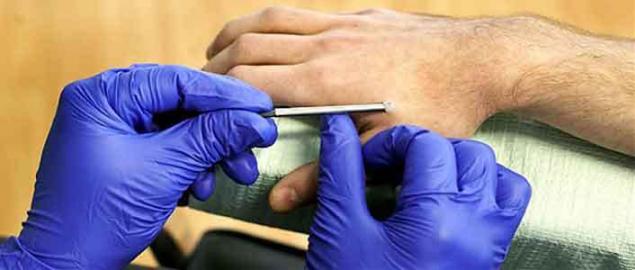702
In South Korea, established subcutaneous solar battery
Experts from the Institute of Science and Technology Gwangju city (south-west of the Republic of Korea) have developed a miniature solar cells that can be implanted under human skin to provide an uninterrupted supply of devices implanted in the body, such as pacemakers. This was reported by the Ministry of Science, ICT and scientific forecasting of the country.

"Conventional battery of medical appliances that are placed into the human body through surgical intervention, there are no more than five to eight years. After this we have to re-conduct the operation to replace them. Our invention solves the problem of electricity shortage, besides power is provided around the clock in two hours of charging from the sun ", - explained scientists
. The invention has been made in the framework of a project funded by the South Korean government. It is a flexible plate thickness in 1/15 of a human hair (6-7 microns). The area of the battery capacity of 647 mW is less than 0, 07 square meters. cm. According to the developers, the new product was successfully charged, even if the person applied to the skin the drug, which blocks ultraviolet light coming together with sunlight.
"We expect that our development will be actively used in the electronic devices implanted in the human body and require considerable electricity costs," - said Professor Lee Jong-ho, under whose leadership a group of scientists and a miniature battery was created.

"Conventional battery of medical appliances that are placed into the human body through surgical intervention, there are no more than five to eight years. After this we have to re-conduct the operation to replace them. Our invention solves the problem of electricity shortage, besides power is provided around the clock in two hours of charging from the sun ", - explained scientists
. The invention has been made in the framework of a project funded by the South Korean government. It is a flexible plate thickness in 1/15 of a human hair (6-7 microns). The area of the battery capacity of 647 mW is less than 0, 07 square meters. cm. According to the developers, the new product was successfully charged, even if the person applied to the skin the drug, which blocks ultraviolet light coming together with sunlight.
"We expect that our development will be actively used in the electronic devices implanted in the human body and require considerable electricity costs," - said Professor Lee Jong-ho, under whose leadership a group of scientists and a miniature battery was created.
























